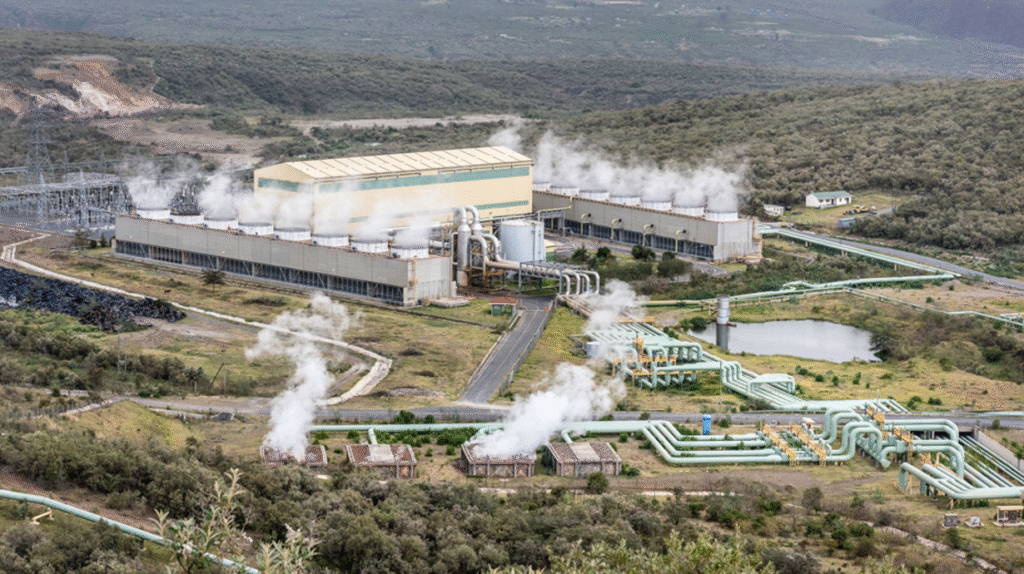Kenya’s industrial sector stands as a vital engine for economic growth, and at its core lies the critical choice of fuel to power factories and drive production. In 2025, this decision is more complex and strategic than ever. While conventional fuels like furnace oil (also known as Heavy Fuel Oil – HFO) and Industrial Diesel Oil (IDO) have historically dominated, a confluence of factors – including economic viability, operational efficiency, environmental responsibility, and climate change commitments – is shaping a diversified energy landscape. This blog explores the primary fuel sources available to Kenyan factories, weighing their benefits and challenges in the current and future context.
1. Heavy Fuel Oil (HFO) / Furnace Oil: The Enduring Workhorse
Furnace oil, or Heavy Fuel Oil (HFO), remains a cornerstone of industrial energy in Kenya, particularly for large-scale operations. It is the heaviest commercial fuel product derived from crude oil refining, making it highly dense and viscous, but also incredibly energy-rich.
- Benefits:
- Cost-Effectiveness: Historically, furnace oil offers the lowest price per unit of energy compared to more refined liquid fuels, making it highly attractive for high-consumption industries seeking to minimize operational expenditure.
- High Energy Density: It provides immense heat output from a relatively small volume, crucial for energy-intensive processes like cement kilns and large industrial boilers.
- Established Infrastructure: Kenya has a mature supply chain for furnace oil, with dedicated import facilities, storage depots, and a network of distributors ensuring reliable delivery, such as Heavycraft Supplies Limited.
- Compatibility with Existing Systems: Many older, large-scale industrial plants were designed for Heavy Fuel Oil (HFO), meaning continued use avoids costly retrofits or replacements.
- Challenges:
- Environmental Impact: Burning furnace oil produces higher emissions of sulfur oxides (SOx), nitrogen oxides (NOx), and particulate matter, contributing to air pollution and acid rain. This is a significant concern in the era of climate change.
- Handling Requirements: Due to its high viscosity, furnace oil requires pre-heating for pumping, storage, and combustion, adding to infrastructure costs and operational complexity.
- Price Volatility: Its price is directly tied to global crude oil markets, making budgeting challenging for factories.
Companies in Kenya, such as major cement manufacturers and large thermal power plants, continue to rely heavily on furnace oil for their massive energy requirements.
2. Industrial Diesel Oil (IDO): The Versatile Blend
Industrial Diesel Oil (IDO) serves as a crucial middle ground between Heavy Fuel Oil (HFO) and more refined diesel (Automotive Gas Oil – AGO). It’s a blended fuel, typically consisting of a mix of diesel and heavier fuel oil components.
- Benefits:
- Cost-Effective Alternative: IDO is generally more affordable than pure automotive diesel, offering cost savings for heating and power generation where HFO might be too heavy or complex to handle.
- Easier Handling: It is less viscous than Heavy Fuel Oil (HFO), requiring less extensive pre-heating and simpler handling infrastructure, making it suitable for a broader range of small to medium-scale industries.
- Versatile Applications: Commonly used for industrial boilers, commercial heating, and powering medium-sized generators in hospitality, agro-processing, and manufacturing sectors.
- Cleaner Than HFO: While not as clean as natural gas, IDO combustion typically results in lower emissions of pollutants compared to furnace oil, making it a step towards improved environmental performance.
- Challenges:
- Still a Fossil Fuel: Despite being cleaner than HFO, IDO is still a petroleum product and contributes to greenhouse gas emissions, facing scrutiny in the context of climate change mitigation.
- Price Fluctuations: Similar to other petroleum products, its price is subject to global market volatility.
- Availability: While widely distributed, securing large, consistent volumes might require robust supplier relationships.
Many factories and commercial establishments in Kenya value Industrial Diesel Oil (IDO) for its balance of cost and operational ease.
3. Natural Gas (Liquefied Natural Gas – LNG and Compressed Natural Gas – CNG): The Cleaner Fossil Bridge
Natural gas offers a significantly cleaner-burning alternative to both Heavy Fuel Oil (HFO) and Industrial Diesel Oil (IDO). While Kenya does not have large indigenous reserves, the burgeoning global Liquefied Natural Gas (LNG) market is making it an increasingly viable import option.
- Benefits:
- Reduced Emissions: Produces significantly lower carbon dioxide, sulfur oxides, and particulate matter emissions, aligning with climate change goals and improving local air quality.
- Operational Efficiency: Burns cleaner, leading to less equipment fouling and lower maintenance costs for boilers and generators compared to furnace oil systems.
- Consistent Supply: Once infrastructure is in place, natural gas offers a continuous and reliable fuel supply.
- Challenges:
- Infrastructure Investment: Requires substantial upfront investment in regasification terminals (for LNG), pipelines, or specialized CNG transport. This is a developing area in Kenya.
- Conversion Costs: Existing furnace oil or IDO burning equipment needs costly modifications or replacement.
- Import Dependency: Still relies on international supply chains, although from a more diversified global market than crude oil.
As Kenya seeks to decarbonize, natural gas is seen as a crucial bridging fuel for industries.
4. Biomass (Agricultural Waste, Wood Pellets, Biogas): Kenya’s Renewable Abundance
Given Kenya’s strong agricultural base, biomass presents a compelling and renewable fuel option derived from organic matter.
- How it Works: Agricultural residues (like coffee husks, bagasse, rice husks), sustainably harvested wood, or processed wood pellets can be directly combusted in industrial boilers. Biogas, generated from anaerobic digestion of organic waste (e.g., animal waste, food waste), can be captured and used for heating or electricity generation.
- Benefits:
- Renewable and Sustainable: Sourced responsibly, biomass is a carbon-neutral fuel, significantly reducing a factory’s carbon footprint and aiding climate change mitigation.
- Local Availability: Reduces reliance on imported fossil fuels, creating local value chains and supporting rural economies. This offers greater energy independence than Heavy Fuel Oil (HFO).
- Waste-to-Energy: Provides a sustainable solution for managing organic waste streams.
- Stable Pricing: Less susceptible to global fossil fuel market volatility.
- Challenges:
- Supply Consistency and Quality: Ensuring a steady, high-quality supply of biomass feedstock can be challenging for large operations.
- Storage and Handling: Biomass often requires more storage space and specialized handling equipment than liquid fuels like furnace oil.
- Equipment Conversion: Existing HFO or IDO boilers require significant modification or replacement.
- Emissions Control: While cleaner, biomass combustion still requires proper emission controls for particulate matter.
Many agro-processing industries in Kenya are already exploring or implementing biomass solutions.
5. Solar Thermal Energy: Harnessing the Kenyan Sun for Heat
Beyond solar PV for electricity, solar thermal energy directly converts sunlight into heat for industrial processes.
- How it Works: Concentrating Solar Power (CSP) systems use mirrors to focus sunlight to heat a fluid (e.g., oil, water, or molten salt), which then transfers heat for industrial processes or steam generation. Flat-plate collectors provide lower-temperature heat.
- Benefits:
- Clean and Renewable: Zero direct emissions during operation, greatly contributing to climate change efforts.
- Free “Fuel”: Once installed, the sunlight is free, leading to significantly reduced long-term operational costs compared to any purchased fuel like furnace oil.
- Energy Independence: Immune to global fuel price fluctuations.
- Challenges:
- Intermittency: Requires thermal energy storage or backup fuel systems (e.g., Industrial Diesel Oil (IDO)) for periods without sunlight.
- High Initial Capital: Significant upfront investment in collectors and associated infrastructure.
- Land Requirements: Large systems need substantial land area.
Kenya’s abundant sunshine makes this an attractive option, especially for industries with consistent heating demands during daylight hours.
6. Geothermal Energy: Kenya’s Deep Heat Advantage
Kenya is a world leader in geothermal electricity generation, and leveraging this deep heat for direct industrial use is an exciting frontier.
- How it Works: Hot water or steam from underground geothermal reservoirs is extracted and directly used for industrial heating, drying processes, or steam generation before being reinjected.
- Benefits:
- Continuous Base-Load Heat: Geothermal energy is available 24/7, unaffected by weather or time of day, offering unparalleled reliability compared to any other fuel.
- Ultra-Clean Energy: Very low greenhouse gas emissions, making it an excellent long-term solution for climate change mitigation.
- Stable Operational Costs: After the initial investment, the “fuel” source is virtually free, providing predictable and low long-term running costs.
- Challenges:
- Location-Specific: Only viable in areas with accessible geothermal resources (e.g., the Rift Valley).
- High Upfront Investment: Drilling and infrastructure development are very expensive and carry exploration risks.
- Resource Management: Sustainable management of the geothermal reservoir is crucial for long-term viability.
For factories located near geothermal fields, this offers a transformative pathway away from fossil fuels.
7. Electric Heating (Powered by Renewables): The Grid Decarbonization Route
As Kenya’s national grid becomes increasingly green (driven by geothermal, hydro, and wind power), direct electric heating for industrial processes becomes a cleaner alternative to burning fuel on-site.
- How it Works: Factories replace traditional boilers (running on furnace oil or IDO) with electric boilers, induction heating, or industrial heat pumps. The electricity drawn from the grid is progressively decarbonized as the grid itself integrates more renewables.
- Benefits:
- Zero On-Site Emissions: Eliminates direct emissions from the factory floor, contributing directly to local air quality and climate change goals.
- High Efficiency: Technologies like industrial heat pumps can be exceptionally energy efficient.
- Simpler Infrastructure: Removes the need for fuel storage tanks, complex piping, and exhaust systems associated with liquid fuels like HFO.
- Leverages National Investments: Benefits from Kenya’s large-scale investments in renewable electricity generation.
- Challenges:
- Electricity Cost: While often cleaner, grid electricity costs can still be higher than HFO for some applications, though this is changing.
- Grid Reliability: Factories need to assess the reliability of the local electricity grid to ensure uninterrupted power for critical processes.
- Conversion Costs: Replacing existing fuel-burning equipment can be a significant investment.
- Peak Demand Management: Large electric heating loads can strain the grid during peak times, potentially leading to higher tariffs.
Conclusion: A Diverse Fuel Future for Kenya’s Factories
The industrial energy landscape in Kenya in 2025 is dynamic, presenting both challenges and exciting opportunities. While furnace oil (Heavy Fuel Oil – HFO) and Industrial Diesel Oil (IDO) remain vital for many established operations due to their cost-effectiveness and existing infrastructure, the imperative for sustainability and predictable pricing is driving a strong interest in diversification.
Factories are increasingly evaluating a mix of solutions, from cleaner fossil fuels like natural gas to robust renewables such as biomass, solar thermal, geothermal, and grid electricity. The “best” fuel choice will depend on a factory’s specific energy demands, geographical location, financial capacity for investment, and commitment to environmental targets. By strategically exploring and adopting these diverse fuel sources, Kenyan industries can not only enhance their operational efficiency and resilience but also contribute significantly to the nation’s climate change objectives and secure a sustainable future. The journey towards a greener industrial sector is ongoing, and the strategic selection of fuel is its driving force.


nice